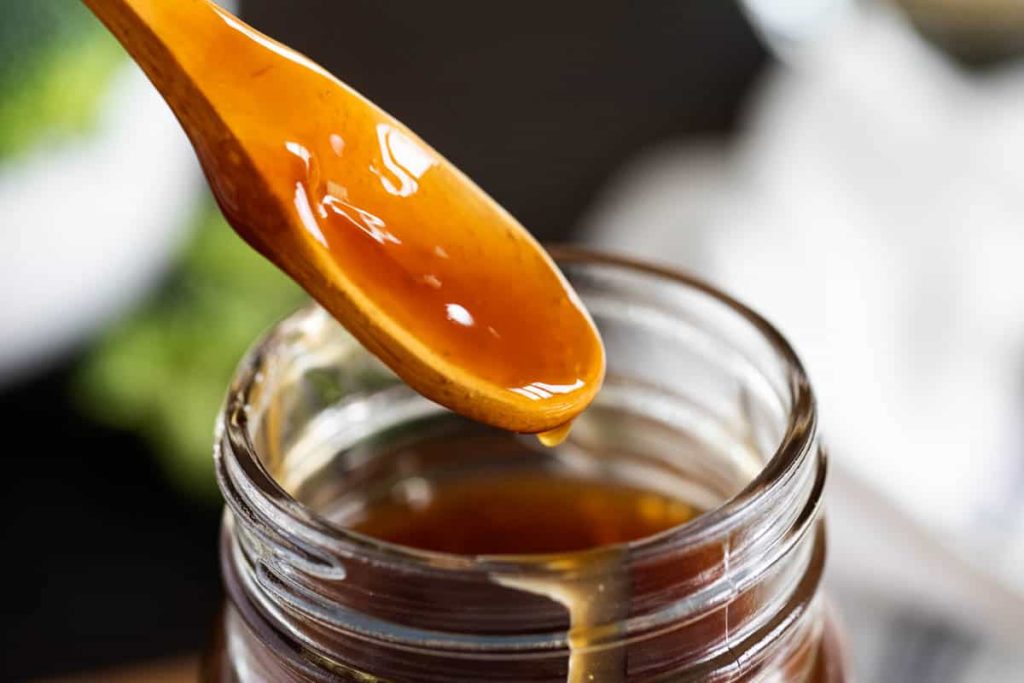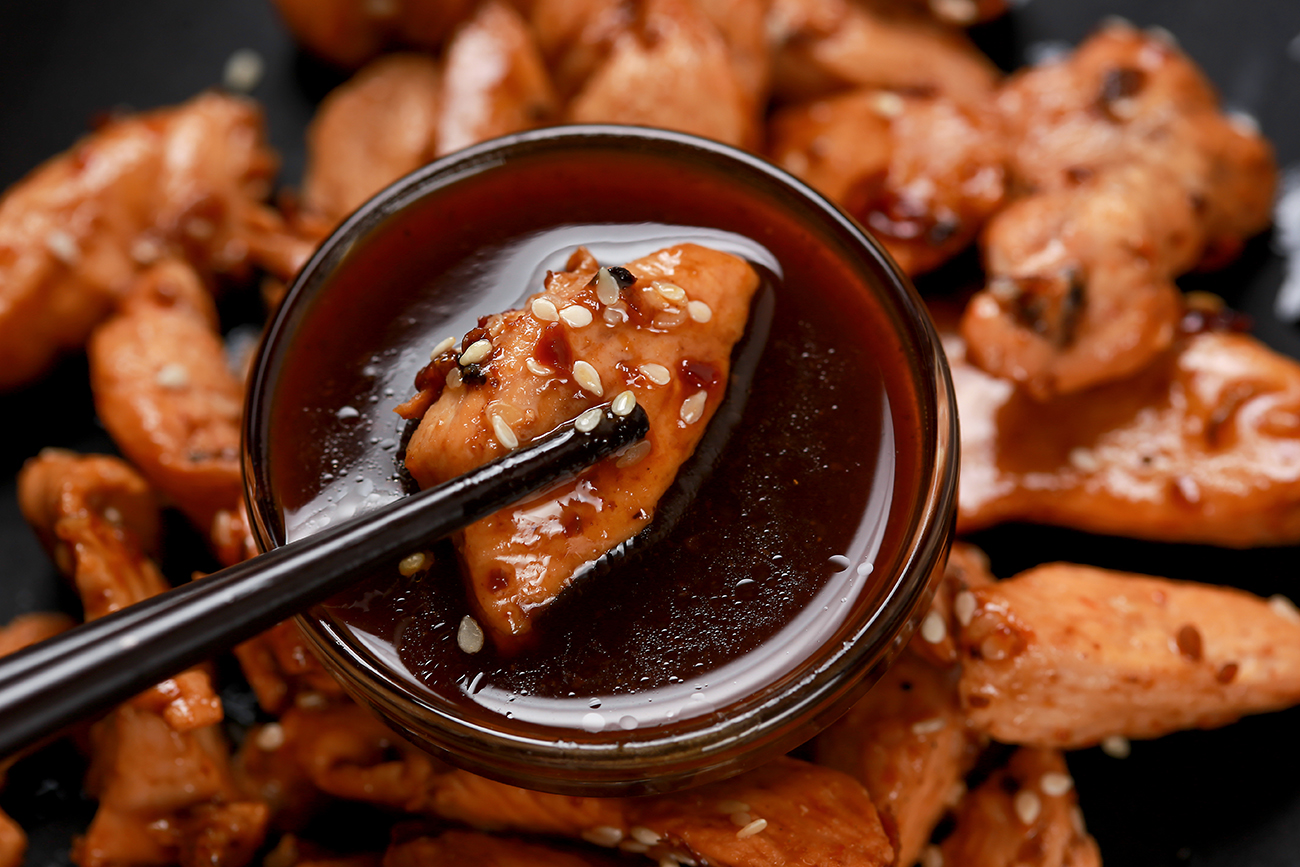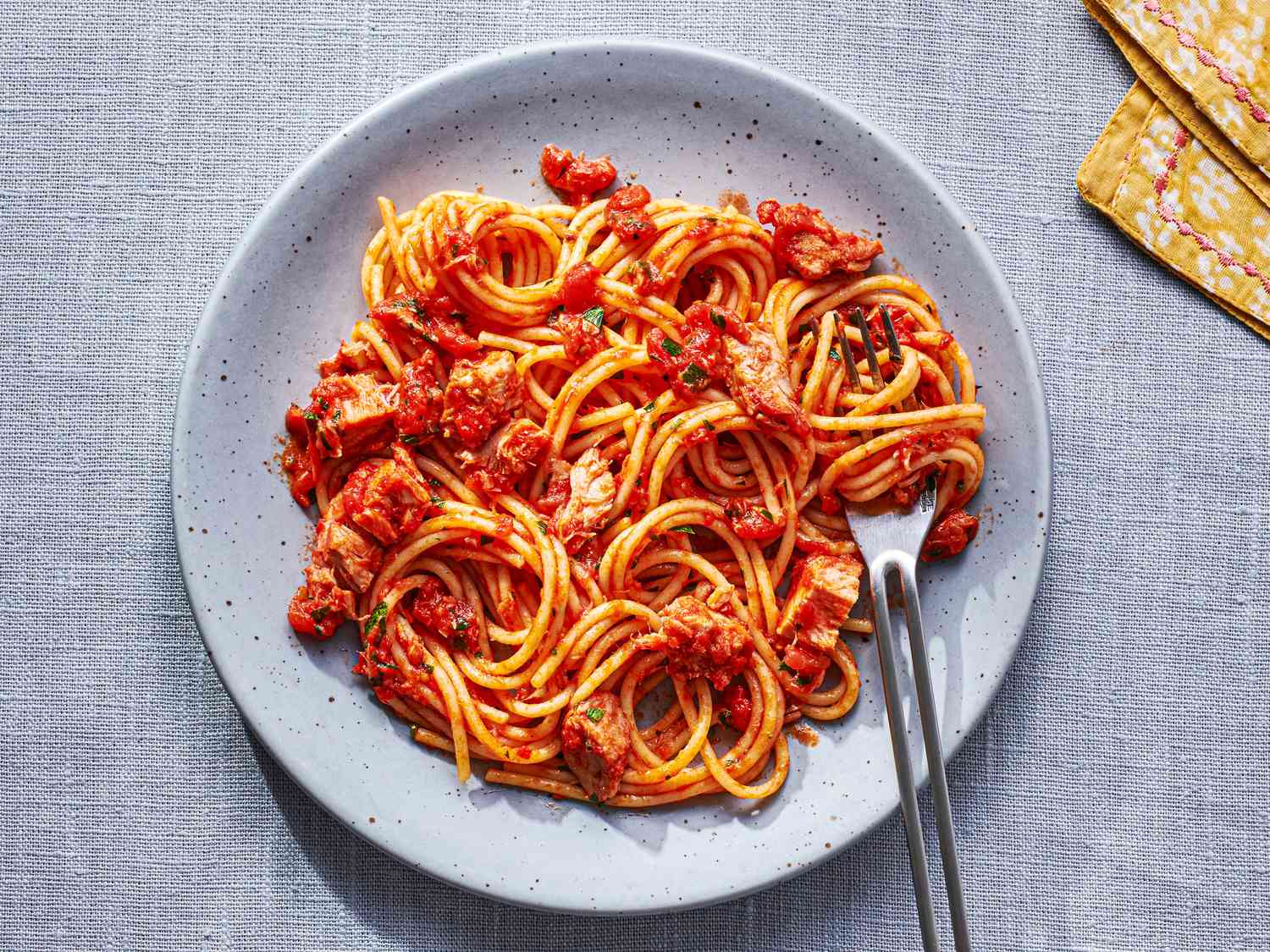Teriyaki sauce has a distinct taste that’s both sweet and savory. It gets its sweetness from sugar or honey, which gives it a pleasant, sugary note. On the savory side, soy sauce takes the lead with its salty and rich umami flavor. You can also detect a hint of spiciness from ginger and garlic, which adds a bit of warmth and depth.
Traditional recipes might use mirin or sake, which contribute a mild sweetness and a touch of rice wine character. In short, teriyaki sauce combines sweet and salty elements with a touch of ginger, garlic, and a subtle umami richness. This versatile sauce is widely enjoyed for its delightful flavor that enhances various dishes.
How Does Teriyaki Sauce Achieve Its Unique Flavor Balance?

Teriyaki sauce achieves its unique flavor balance through a skillful combination of key ingredients, each contributing specific taste elements
Sweetness from Sugar or Honey
Primary Sweet Component: Teriyaki sauce is renowned for its delightful sweetness, primarily achieved through the use of sugar or honey. This primary sweet component gives the sauce its initial sugary note.
Balancing Act: The sweet element not only adds a pleasing sugary quality but also plays a crucial role in balancing the sauce’s overall flavor profile.
Savory Umami from Soy Sauce
The Umami Powerhouse: Soy sauce is the secret behind teriyaki sauce’s savory depth and rich umami flavor. It brings the saltiness and umami characteristics that are fundamental to the sauce’s taste.
Umami’s Role: The umami from soy sauce enhances the complexity and depth of teriyaki sauce, making it a flavorful and well-rounded condiment.
Subtle Spiciness from Ginger and Garlic
Aromatic Complexity: Teriyaki sauce introduces a subtle spiciness, which comes from the inclusion of ginger and garlic. These ingredients not only add a bit of spiciness but also contribute to the sauce’s aromatic complexity.
Warmth and Depth: The combination of ginger and garlic imparts warmth and depth to the sauce, elevating its overall flavor and making it more intriguing to the palate.
Optional Enhancements: Mirin or Sake
Additional Layers of Flavor: Some traditional teriyaki sauce recipes may include mirin or sake, which provide extra sweetness and a hint of rice wine character.
Customization: While these ingredients are optional, they allow for customization and can further enhance the complexity and depth of the sauce, depending on individual preferences.
What Dishes Can You Enhance With Teriyaki Sauce?
Teriyaki sauce can enhance a variety of dishes, thanks to its versatile and delicious flavor. Here are some dishes that benefit from the addition of teriyaki sauce
Grilled Meats: Teriyaki sauce is a classic choice for marinating and glazing grilled meats, such as chicken, beef, and pork. It infuses the meat with a sweet and savory flavor while creating a beautiful, caramelized glaze.
Stir-Fried Vegetables: When stir-frying vegetables, adding a drizzle of teriyaki sauce can transform a simple dish into a flavorful stir-fry. It gives the vegetables a delightful sweet and salty coating.
Seafood: Teriyaki sauce pairs well with seafood, enhancing the flavor of salmon, shrimp, or other fish. It can be used as a marinade or brushed on during grilling or baking.
Noodles and Rice: Teriyaki sauce can be used to flavor noodle dishes, such as teriyaki noodles or yakisoba. It also works beautifully as a sauce for rice bowls, like teriyaki chicken or beef rice bowls.
Skewers and Kebabs: Teriyaki sauce is a fantastic choice for marinating and basting skewers or kebabs, whether they feature meat or vegetables. It adds a burst of flavor and a shiny glaze.
Tofu and Plant-Based Proteins: Teriyaki sauce is a great option for adding flavor to tofu and plant-based proteins. It can be used for marinating and baking or pan-frying.
Burgers and Sandwiches: Teriyaki sauce can be used as a condiment or glaze for burgers and sandwiches. It adds a unique and delicious twist to traditional favorites.
Salads: As a salad dressing or drizzle, teriyaki sauce can give salads an Asian-inspired flavor with its sweet and savory notes.
Grilled Vegetables: Grilled vegetables benefit from a brush of teriyaki sauce before or after grilling, enhancing their taste and creating a caramelized finish.
Appetizers: Use teriyaki sauce as a dip or glaze for appetizers like chicken wings, meatballs, or spring rolls to add a burst of flavor.
What Are The Differences Between Homemade And Store-Bought Teriyaki Sauce?
Homemade and store-bought teriyaki sauce differ in several ways, which can impact their taste and overall flavor profile.
Ingredients
Homemade teriyaki sauce allows for customization. You can choose the quality of ingredients and adjust the ratios to suit your preferences. Store-bought varieties often use preservatives and additives, which can affect the taste and may not be as fresh.
Freshness
Homemade teriyaki sauce is made fresh, allowing you to control the quality and ensure that it’s not stale. Store-bought sauces might have a longer shelf life, but the flavors can sometimes be less vibrant due to extended storage.
Flavor Intensity
Homemade teriyaki sauce can be tailored to your taste, allowing you to adjust the balance of sweet and savory, the spiciness from ginger and garlic, and other components. Store-bought sauces might have a standardized flavor, which can be less adjustable.
Complexity
Homemade teriyaki sauce often boasts a more complex flavor profile since you can experiment with additional ingredients or cooking methods to achieve a richer taste. Store-bought versions may simplify the flavors for mass appeal.
Control Over Sweetness
When making teriyaki sauce at home, you can precisely control the level of sweetness by adjusting the amount of sugar or honey. Store-bought options may have a fixed level of sweetness, which might not suit all palates.
Artisanal Touch
Homemade teriyaki sauce allows you to infuse your personal touch into the recipe, making it a unique creation. Store-bought sauces lack this personalized touch and may taste more generic.
Cost
Homemade teriyaki sauce can be cost-effective, especially if you have most of the ingredients on hand. Store-bought options may be convenient but can be more expensive for the quality.
How Is Teriyaki Sauce Culturally Significant In Japan And Beyond?

Teriyaki sauce holds cultural significance both in Japan and beyond, contributing to various culinary traditions
In Japan
Traditional Japanese Cuisine: Teriyaki sauce originated in Japan and is a staple in traditional Japanese cuisine. It exemplifies the balance of sweet and savory flavors found in many Japanese dishes.
Cooking Techniques: Teriyaki refers to the cooking method of grilling or broiling with a glaze. This technique is used for a variety of proteins, from fish (teriyaki salmon) to chicken (teriyaki chicken).
Widespread Use: Teriyaki is enjoyed not only at home but also in restaurants and as a popular bento (lunchbox) item.
In the United States
Japanese-American Fusion: Teriyaki sauce gained popularity in the United States as Japanese-American cuisine developed. It became a cornerstone of the popular “teriyaki bowl” restaurants.
Cross-Cultural Adaptation: Teriyaki sauce was adapted to suit American tastes, with a slightly sweeter and more simplified flavor profile. It became a beloved condiment and marinade for grilled dishes.
Internationally
Global Fusion Cuisine: Teriyaki sauce has become a part of international fusion cuisine. It’s used to add an Asian-inspired twist to various dishes worldwide, from teriyaki burgers to teriyaki tacos.
Versatility: Its sweet and savory balance, along with its umami-rich profile, makes teriyaki sauce a versatile addition to diverse culinary traditions, enhancing flavors in unexpected ways.
Cultural Symbolism
Iconic Flavor: Teriyaki sauce is celebrated for its iconic flavor and its role in representing the essence of Japanese cuisine and culinary techniques.
Cross-Cultural Connection: Teriyaki sauce acts as a bridge between different food cultures, creating connections and shared flavors across the globe.
FAQ
What does teriyaki sauce go with?
Teriyaki sauce is incredibly versatile and pairs well with a variety of dishes. It complements grilled meats, stir-fried vegetables, seafood, rice bowls, and even sandwiches. Its sweet and savory flavor enhances the taste of many foods.
Does teriyaki sauce taste like soy sauce?
Teriyaki sauce includes soy sauce as a key ingredient, but it has a distinct taste. While soy sauce contributes saltiness and umami, teriyaki sauce’s sweetness and added components like ginger and garlic give it a unique flavor profile.
Why does teriyaki taste so good?
Teriyaki sauce’s appealing taste results from its harmonious balance of sweet and savory elements. The sweetness from sugar or honey combines with the umami richness of soy sauce, creating a delightful and well-rounded flavor.
What can I replace soy sauce with?
You can replace soy sauce with alternatives like tamari (a gluten-free soy sauce), coconut aminos, or liquid aminos. These substitutes provide a similar salty and savory flavor without soy.
Why avoid soy sauce?
Some people may avoid soy sauce due to allergies, dietary restrictions, or concerns about its high sodium content. Others opt for alternatives like low-sodium soy sauce or gluten-free options.
Can I skip soy sauce?
Yes, you can skip soy sauce and opt for soy sauce alternatives, depending on your dietary preferences or restrictions. This allows you to enjoy similar flavors without using traditional soy sauce.
What is healthier than soy sauce?
Healthier alternatives to traditional soy sauce include low-sodium soy sauce, tamari, coconut aminos, or liquid aminos. These options offer reduced sodium and cater to specific dietary needs.
What is in Maggi sauce?
Maggi sauce, also known as Maggi seasoning, typically contains ingredients like water, salt, wheat gluten, and flavor enhancers. It is used to add umami and seasoning to a variety of dishes.
What is the least healthy sauce?
Sauces with high levels of sodium, added sugars, or unhealthy fats are often considered less healthy. For example, some barbecue sauces and certain commercial salad dressings can be less healthy options due to their high sugar and sodium content.
Final words
In conclusion, teriyaki sauce is a delicious and versatile condiment known for its perfect balance of sweet and savory flavors. It combines the saltiness of soy sauce with the sweetness of sugar or honey and a touch of spiciness from ginger and garlic. Whether you’re marinating meats, stir-frying vegetables, or adding flavor to a variety of dishes, teriyaki sauce is a wonderful way to enhance your meals. So, if you haven’t tried teriyaki sauce yet, give it a go and savor the delightful harmony of flavors it brings to your favorite dishes.











